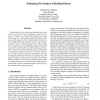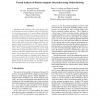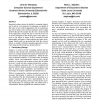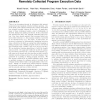37 search results - page 5 / 8 » Understanding software approaches for GPGPU reliability |
HASE
1998
IEEE
13 years 11 months ago
1998
IEEE
Residual defects is one of the most important factors that allow one to decide if a piece of software is ready to be released. In theory, one can find all the defects and count th...
SEFM
2005
IEEE
14 years 1 months ago
2005
IEEE
Experiments with simulators allow psychologists to better understand the causes of human errors and build models of cognitive processes to be used in Human Reliability Assessment ...
SIGCSE
2002
ACM
13 years 7 months ago
2002
ACM
Empirical evidence shows the ability for computer technology to deliver on its promises of enhancing our quality of life relies on how well the application fits our understanding ...
SIGSOFT
2005
ACM
14 years 8 months ago
2005
ACM
There is an increasing interest in techniques that support measurement and analysis of fielded software systems. One of the main goals of these techniques is to better understand ...
KBSE
2007
IEEE
14 years 1 months ago
2007
IEEE
Effective bug localization is important for realizing automated debugging. One attractive approach is to apply statistical techniques on a collection of evaluation profiles of pr...




